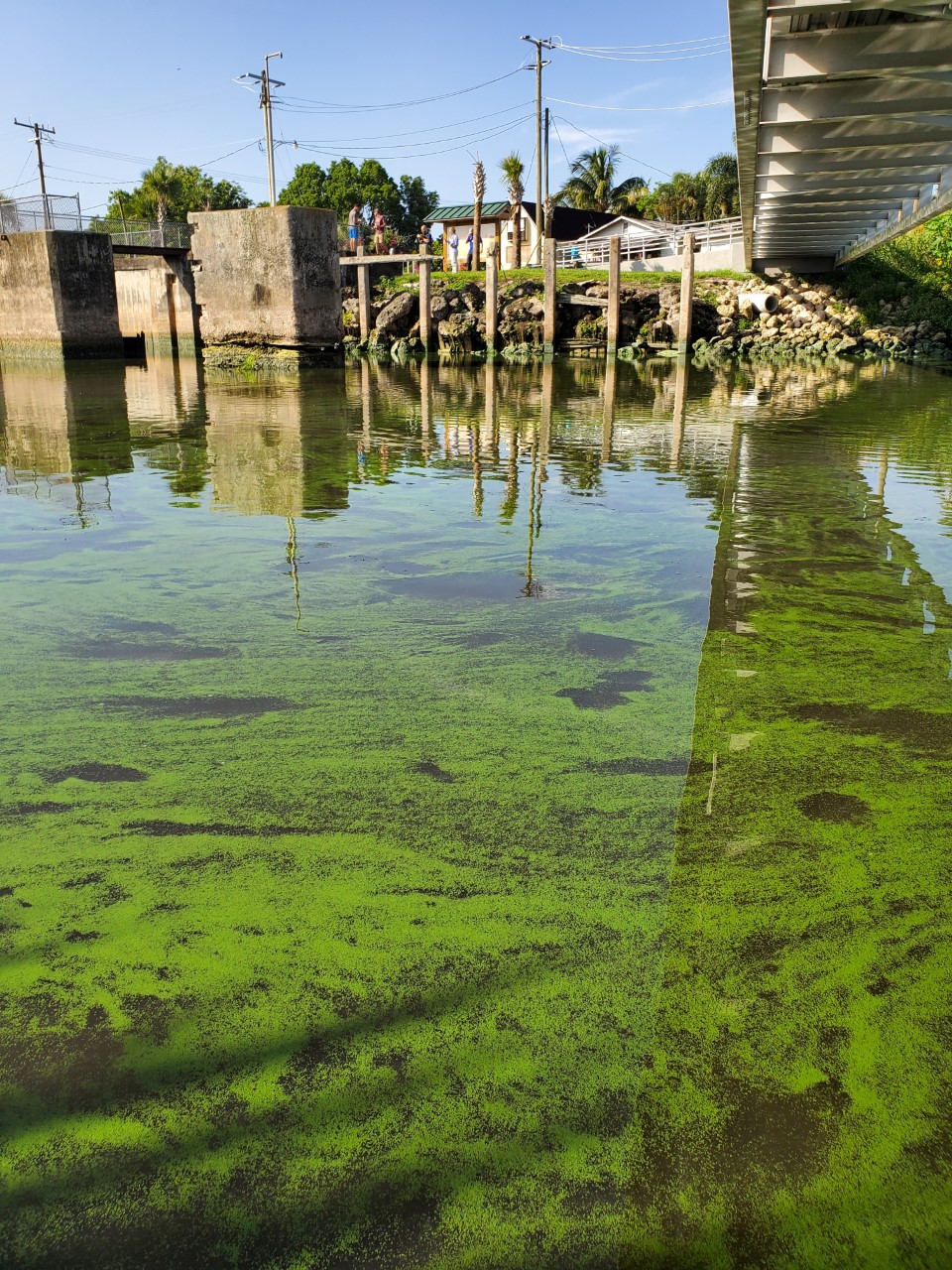College of Engineering News Room
A Collaborative Approach to Harmful Algal Blooms in Florida’s Largest Freshwater Lake

by Russell Nay
The Environmental Protection Agency (EPA) recently awarded a team of engineers and geoscientists at USF a $1 million grant to research new methods for preventing and controlling harmful algal blooms (HABs) in Lake Okeechobee. HABs are a growing concern with the well-documented severe impacts on our Nation’s economy, environment, and human well-being. Excess nutrient loadings are considered the primary anthropogenic stressor to HAB-impacted surface waters. EPA supports research on nutrient treatment technologies and management practices to prevent and control HABs for the better protection of the watersheds.
One of seven institutions to receive EPA funding as part of the agency’s related grant program, USF’s efforts to control HABs in Florida’s largest freshwater lake are led by Department of Civil and Environmental Engineering Professor Qiong Zhang, who is the project’s principal investigator.
“Effective control of harmful algal blooms depends not only on the development of new technologies and management practices, but also on the decisions of where and when to implement them,” Zhang said in an EPA press release. “Researchers at the University of South Florida have spent many years studying this issue, and it’s important for us to continue pursuing innovative solutions.”
The project team includes Department of Civil and Environmental Engineering Professors Mauricio Arias, Sarina Ergas and James Mihelcic, as well as Department of Industrial Engineering and Management Professor Hadi Charkhgard and USF School of Geosciences Professor Mark Rains.
Charkhgard said he’s worked with Department of Civil and Environmental Engineering faculty members and U.S. Geological Survey officials for several years now and is excited to see connections between this and past research projects he’s collaborated with USF environmental engineering professors on. He said he credits the team’s formation to Zhang’s leadership.
Ergas said that the project’s investigators have been working together for more than 10 years across several projects, and all six professors involved have complimentary skills important to the success of the project.
Rains added that these specific but related areas of expertise have allowed them to clearly identify which team members would be authorities for each task outlined in the project proposal, which will have a considerable impact on the project’s timescale.
The team plans to first develop a holistic assessment framework for evaluating available approaches to managing nutrient levels in Lake Okeechobee before outlining a roadmap for scaling up emerging technologies to support from the project budget to better control and prevent HABs in the lake. Once selected, they’ll optimize the implementation of the most promising of these new technologies and strategies into the lake’s future management.
Chosen technologies and strategies will be based on findings from new research models produced by the project, one of which includes the first open-source, eco-hydrodynamic model for Lake Okeechobee. Once developed, the tool will be available for anyone to contribute to its body of knowledge on the hydrodynamics and ecology of Lake Okeechobee.
“Most of the modeling tools used for water resource management in South Florida have been developed by water management district staff with their own beliefs,” Arias said. “Some of the existing tools have not been subject to the scrutiny of the scientific community, as they are not commonly shared outside the agencies.”
Deciding on what technologies to support is difficult, as any chosen solution needs to work specifically for Lake Okeechobee. Ergas said that promising technologies need to account for Florida’s sub-tropical climate, including its high water tables, periods of intense rainfall and drought, and intense and prolonged flooding. Some technologies that work well in other regions may not work well in Florida, and the state’s extensive agricultural activity, rapid urbanization, social conditions and climate make it very difficult to control nutrient runoff.
Chosen technologies and strategies will also approach the prevention and control of HABs in Lake Okeechobee at a basin-wide level that takes a multitude of large nutrient sources into account instead of focusing on just one.
“Oftentimes legislators look at this problem of harmful algal blooms, and they try to find a single solution like getting rid of all septic systems or imposing specific regulations on agriculture or urban runoff or central wastewater plants,” Ergas said. “As engineers and scientists, we know that these complex problems need a variety of solutions, and we need to use our financial and technological resources judiciously in order to solve these problems.”
Floridians and those visiting Florida have already seen the effects of unchecked HABs on the state’s waterways for years. The blooms are harmful to the areas’ public health and economy, causing mass fish kills, respiratory issues in humans and decreased tourism.
“The problem of HABs in our waterways has been unchecked for a very long time already,” Arias said. “There have been major algae blooms in the rivers and bays that Okeechobee discharges to — in particular the Caloosahatchee River and St. Lucie Canal.”
The three-year project period runs from September 1, 2020 to August 31, 2023, and you can read more about it at: https://cfpub.epa.gov/ncer_abstracts/index.cfm/fuseaction/display.abstractDetail/abstract/11100/report/0